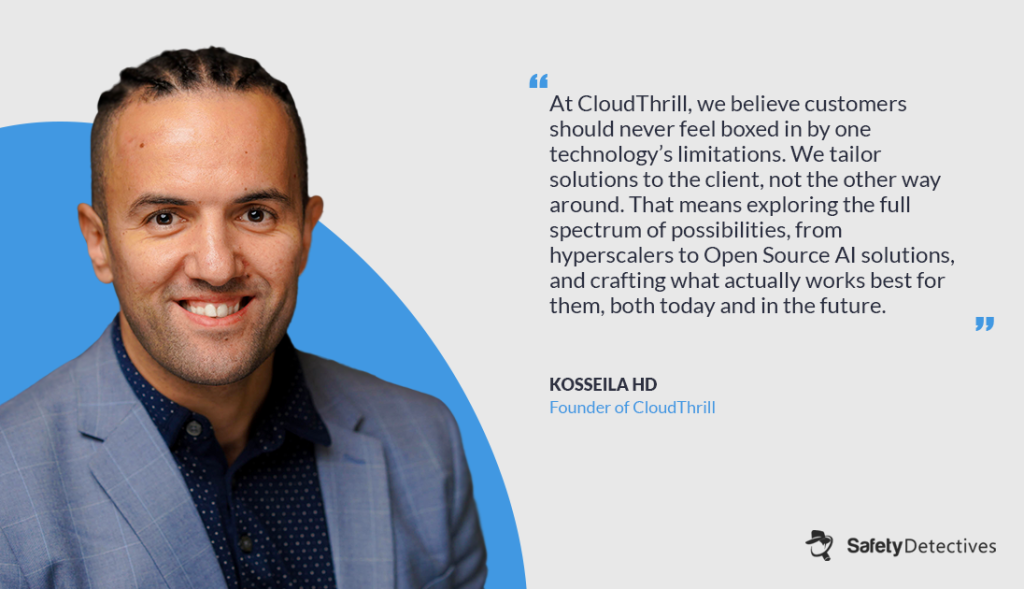
Intro
Our Founder & CEO, Kosseila Hd, recently sat down with SafetyDetectives to share CloudThrill’s vision on why the real AI revolution lies in infrastructure rather than just apps, and what that means for organizations building and owning their private, scalable AI.

In the interview, he shares:
- Why vendor lock-in is holding companies back and what sparked CloudThrill’s creation
- The underrated “plumbing” of AI (orchestration, GPU Economics, compliance)
- The biggest challenges to adoption: skills, costs, and governance
- The smartest AI moves in 2025
- What excites us most about the next 5 years of AI infrastructure
Stay in touch:
Sign up for our newsletter and be the first to get your weekly dose of Cloud AI & DevOps innovation.
[ Subscribe to Newsletter ]